
Located at Northwest China, Qinghai occupied a vast swathe of the northeastern chunk of the Tibetan plateau. The amazing nature landscape was very worth to take a tour for discover. Along with many exquisite monasteries and temples to visit.
Arrive at Xining airport , after meeting with the guide at exit of arrival Hall , then transfer to the hotel.
Free at leisure the rest time of the day after long flying.
Meals on your own account
Overnight at Xining
After breakfast , your journey will star from Museum of Tibetan Medicine This is a real treasure not to be missed. It is lodged in a new magnificent building. The central area shows a very colourful work of art worth a long look. Surrounding this entrance area there is a room displaying herbal and metal samples of sources of medicine and in the room next is a series of older paintings and tapestries showing the teachings of the medical arts. Totally amazing. Then, on the second floor, there is the room showing a very long painting --Tangka (680 meters long,) of what looks like the birth of Tibet and its evolution through the ages. Magnificent.
Then Take a stop at Dongguan Mosque is in Xining’s Dongguan region which is mostly inhabited by Moslems. It is considered together with Huajue Mosque in Xi’an of Shanxi, Qiaomen Mosque in Lanzhou of Gansu, and Aitiga Mosque in Kashi of Xijiang as 4 largest mosques in Northwest China. It was built in the Hongwu Period of the Ming Dynasty and has a history of over 600 years.
In the afternoon, transfer to visit Taer Monastery( Kumbum Mosque) which is located in Huangzhong County is a typical religious building with a history more than 400 years. Taer Monastery is a wonderful architectural complex contains 9,300 structures, including Buddha halls, scripture halls, Buddhist pagodas and lamas residences.
Remark: the debate time of Taer Monastery (16:30-17:30) expect in winter as weather is and gets dark early in winter, monks don’t debate everyday in the cold season.
Then, transfer back to hotel in Xining.
Overnight at Xining
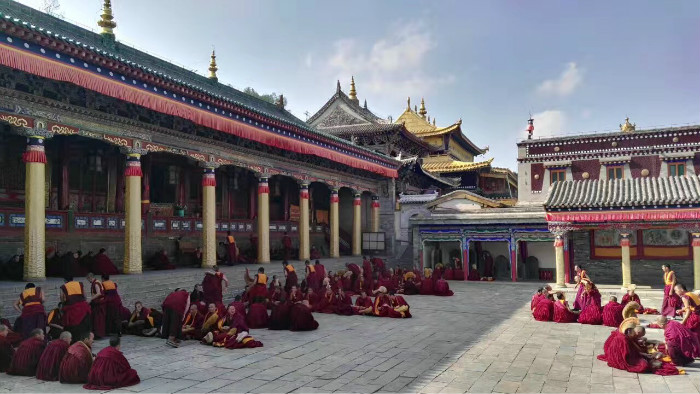
Drive 96km to Qutan Si (Drotsang Gonpa). In Tibetan Drotsang means granary, local people call it "Lakhang on" meaning a place where is in a Buddhist temple. Before 1958, the whole county had 31 monasteries for local Tibetan, Mongolia and Tu People with total population more than 30,000, now there are about 17 monasteries are left. The most famous one is Drotsang monastery built in 1392. The original images and unique murals around the monastery wall are exciting to see. Now it has 40 monks
Then we drive 96km to Youning Si (Gonlung Jampaling), built in 1604, now housing 400 monks. The Third Dalai Lama came here to give lectures of Buddhism in 1584 and requested by the local people to build a monastery.
Finally we drive 50km return to Xining for overnight.
Overnight at Xining
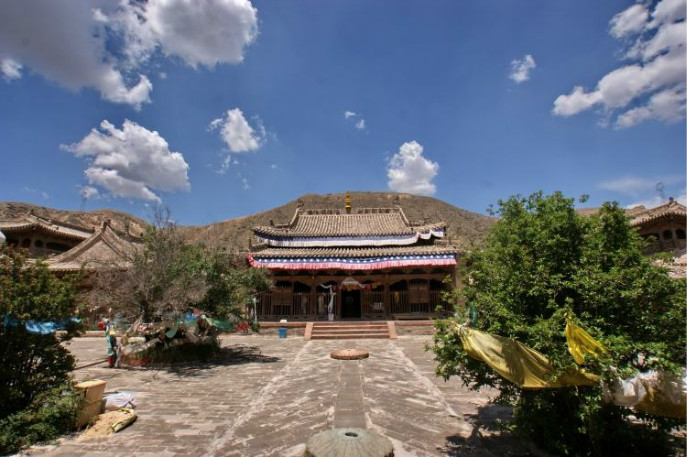
Morning drive to Tongren (230km ) , the historical cultural ancient city of China--Tongren. Tongren is known mainly for its Regong Art of Tibetan Buddhism in the world. Regong Art includs mainly Tibetan Scrolling Painting (Tangka), fresco in the temples and fine wooden carving crafts, etc.
On the way , stop to visit Xiaqiong monastery.It is also one of the oldest monasteries in Qinghai ,was founded in 1349 by QuJieDunZhuRenQin ,the first teacher of tsongkhapa .At the height of the monastery’s glory ,the number of monks peaked at over 4130 (including 26attics),there were 75 temples in it .
Upon arrival, check in your hotel
In the evening, we will enjoy the Tibetan dinner with local family
Overnight at Tongren
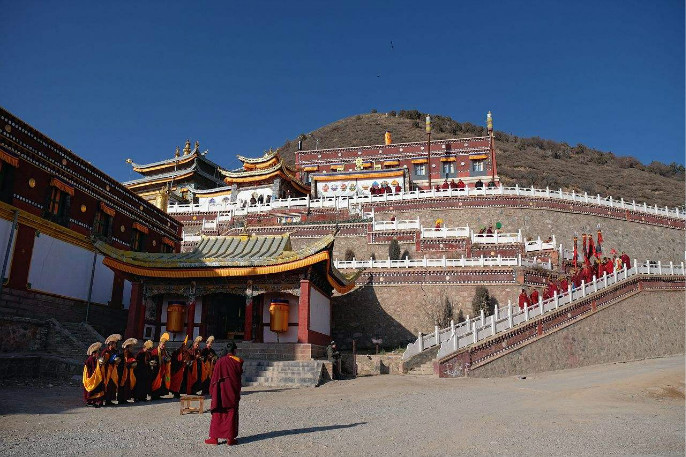
In the morning, go to visit the Longwu Temple.(Longwu Temple, a sanctum of Buddhism, is one of the comparatively old temples of Tibetan Buddhism and the biggest temple of Gelu denomination in Qingnan Area .Longwu Temple was first built in 1301. It has a history of 699 years.It has grand architecture scale, stately model, and luxurious decoration) .
Then move to visit the upper and lower Wutun Temple .The Wutun Temple is located in the Tongren County of Huangnan Tibet Autonomous Region of Ningxia Province. It is 6 km northeast to Longwu Town. It is a temple of Lamaism and famous of mural.
Then take a visit of the local Regong Artist Family (Regong Art is a successful mix of religious art by Tibetan and Tu ethnic minorities and local folk arts. To better protect the art, it was included in the second phase of the National Folk Culture Protection Project in April 2004. As an important genre in Tibetan Buddhism, the art has a history of more than 700 years. It is called “the flower on the Tibetan Plateau” and “a magnificent pearl of Chinese art”.)
Overnight at Tongren
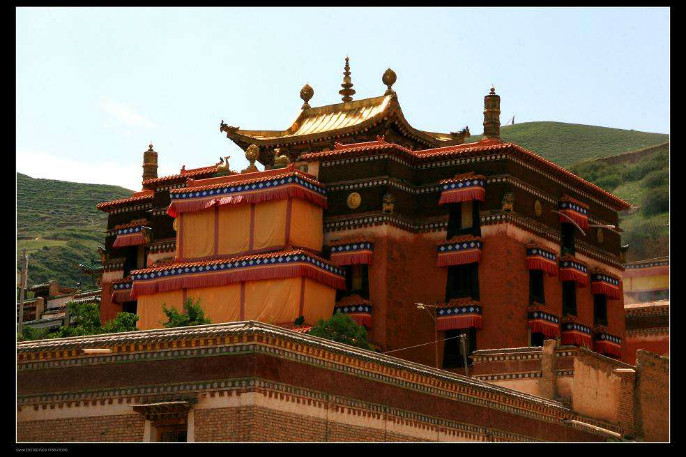
In the morning, take the tour of Guomari Monastery which is located in the Guomari Village about 5km north of Tongren. The Monastery was first built about 1741.
The most famous of the Monastery is Guomari Stupa is the largest of its kind in the Amdo Tibetan-inhabited area. The 33-m-high pagoda covers an area of 1,156 sq m and has a pedestal with a perimeter of 33 meters. Enshrined in it are the cassock and daily necessities of the 10th Panchen Lama. Standing outside the pagoda are 35 statues of Buddha Prajna.
Later move 40km to take stop at Shuangpengxi Village which is a nice,simple and unsophisticated Tibetan village.
Afterward , transfer back to Tongren,and continue drive to Xunhua ( 120km --1.5-2hrs )
Later visit the Former residence of 10th Panchen Erdini Qoigyi Gyaincain 10th Panchen Erdini Qoigyi Gyaincain's hometown rich in Tibetan culture is located in the Xunhua Sala Autonomous County, eastern part of Qinghai provincea.
Then transfer to visit Wendu Monastery which is the largest and earliest Monastery in Xunhua area. Firstly built in 1272.
Overnight at Xunhua
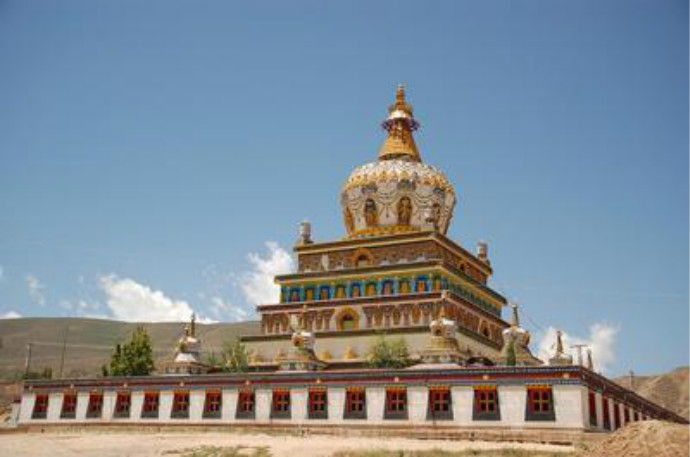
In the morning, go to visit Jiezi mosque in Xunhua Xunhua is the only Sala Autonomous county in China,which is also a big family that multi-nations live together playfully.Salar believe in Islam. Jiezi mosque is the ancestral mosque of Sala,and also the second biggest Mosque in Qinghai province. It was built in the Ming dynasty,and being extended in the next dynasties,then forming today’s mosque that has an area of 4050 squire maters and can hold 1200 people religious service together.
Later continue to visit Mengda Nature Reserve (Mengda Heavenly Lake )
Located about 110 kilometers (68.35 miles) southeast of Xining in the Xunhua Salar Autonomous County, the Mengda Nature Reserve is a flourishing area of natural beauty. It boasts for its amazing scenery and a wet and mild climate, which may explain how it has won itself a nick name “highland Xishuangbanna.” (Xishuangbanna is a fairyland inis the tropical southern region in China’s Yunnan Province). Established in 1980, the reserve is the first reserve focusing on plant protection in Qinghai. Covering a total area of 9,544 hectares, it features primeval primeval forest, a large variety of exotic flowers, waterfalls and many wild animals. Looking from a distance at the Mengda Heavenly Lake in the reserve, the lake is like a pearl on the Qinghai-Tibet Plateau. It is a perfect place for hiking .
Then drive to Xiahe ( 230km ) , Upon arrival , check in your hotel
Overnight at Xiahe
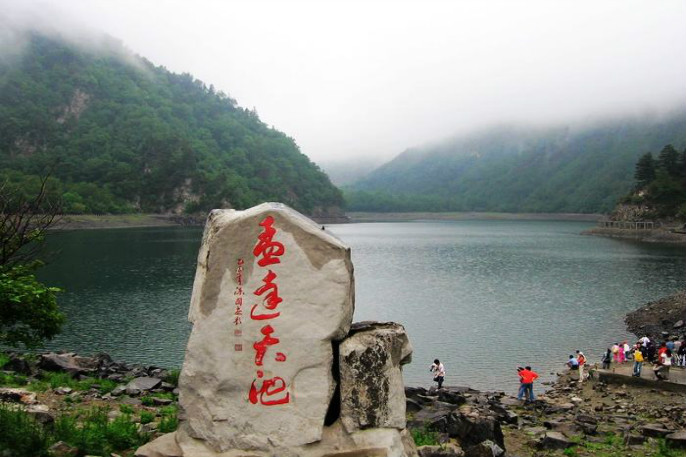
Firstly,go to visit the Labrang Monastery .Labrang is located in Xiahe County in Gansu province, in the traditional Tibetan area of Amdo. Labrang Monastery is home to the largest number of monks outside of Tibet Autonomous Region.
Later have a visit to the Nun temple.Its full name is Arjun Nanzong three Danqiongpeilin Temple. It founded in 1327, is the largest nun monastery in Qinghai, the Tibetan Buddhist Nyingma monasteries.
Finally , you will visit the local Market before transfer to Langmusi Town (260km )
Overnight at Langmusi Town
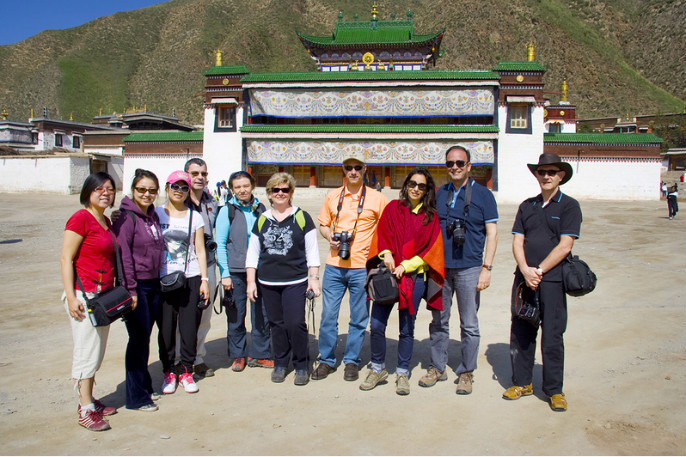
After breakfast, take the tour of Hezuo Milariba Buddha Pavilion is said to be the only temple of this kind in the whole Tibetan area, and the one in Hezuo is only one has nine floors and dedicated to Tibetan Buddhism founder. The temple is about 40 meter high, it was originally built in Qing dynasty, and has a history of more than 200 years. There are perennial resident monks and lamas studying here, formed a unique cultural atmosphere. Then have a short walk around Folk Street and Century Square.
Then pay a visit of Langmusi Monastery and Langmusi Town Langmusi is not just a temple, the town itself is called Langmusi (which means Langmu Temple). It is a very small town, and yet half of it is in Gansu Province, and half in Sichuan Province. Half of the people here are Tibetans, and half are Muslims. You can see both Buddhist monastaries and Muslim mosques in the little town. The scenary here is absolutely fantastic, red mountain, beautiful valley, blue sky, forests, flowers, temples...And there are tons of activities to do here, you can hike in the valley, go see the local horse racing, ride a horse to experience the local nomadic life, go to the nearby Flower Lake, enjoy the numerous local festivities (especially during the Spring Festival and the summer months), visit the splendid temples, or simply sit on the grass and enjoy the fantastic view around you. Plenty of lodging and restaurants. Most restaurants are Muslim ones, with great beef and mutton
Overnight at Langmusi Town
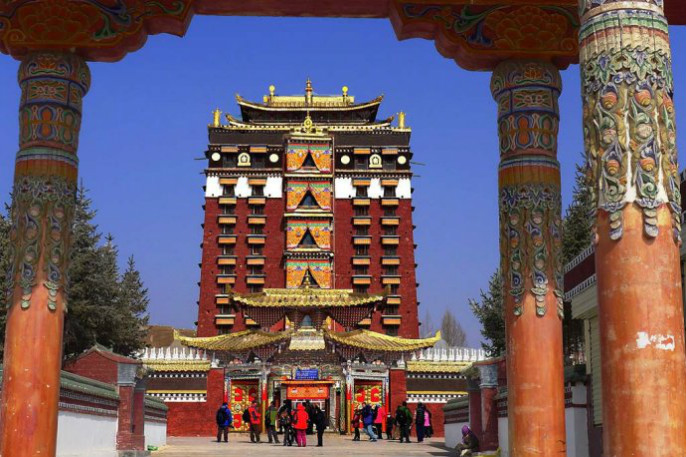
After breakfast. You will transfer to Yongjing via Linxia ( 380km ) On the way , stop at local Hui Nationality village (Chinese muslin) in Linxia Hui Autonomous Prefecture on the way and local Market , and the splendid Mosque
Of Linxia is blessed with both natural and cultural wonders. The Yellow River runs through the north of the prefecture, forming a larger reservoir at Yongjing's Liujiaxia Dam, and a smaller one at Yanguoxia Dam further downstream.
Overnight at Yongning
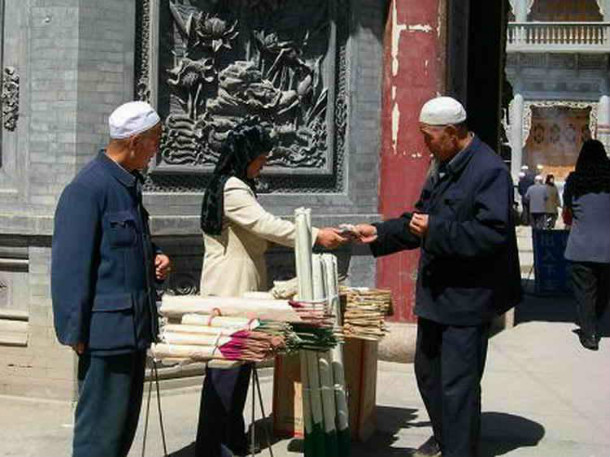
Today ,star your trip from Bingling Thousand Buddha Caves is located on the Small Jishi Hill, about 35 kilometers (about 22 miles) west of Yongjing County in Lanzhou City. Bingling means 'ten thousand Buddhas' in the Tibetan language. The starting construction time of Bingling Thousand Buddha Caves dates back to the Western Jin Dynasty (265-316). Famous for its stone sculptures, Bingling Thousand Temple Caves stretches about 200 meters (about 600 feet) on the west cliff in Dasi Gully. Among the caves, the main characters are Sakyamuni, Kwan-yin, Amitayus Buddha, Maitreya Buddha, and other Buddhas. With elegant postures, flying robes and ribbons, the statues are life-like. Among the caves, Cave No.169 is worthy of a particular mention. Made in the Northern Dynasties (386-581), it is the most imposing and delicate one which holds the clay sculptures of Kwan-yin, Dali Buddha (Dali means powerful strength in Chinese), etc.
After tour , drive to Lanzhou (100 km 1-1.5hrs on the way ). Check in your hotel after arrival.
Overnight at Lanzhou
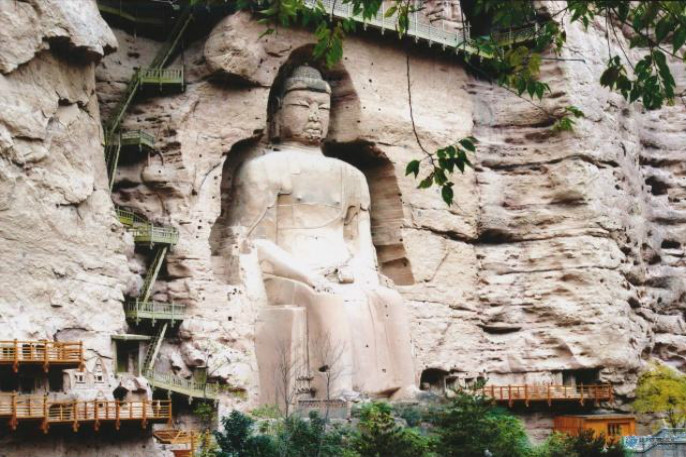
Free time today before a transfer Lanzhou airport for your departure flight to next destination